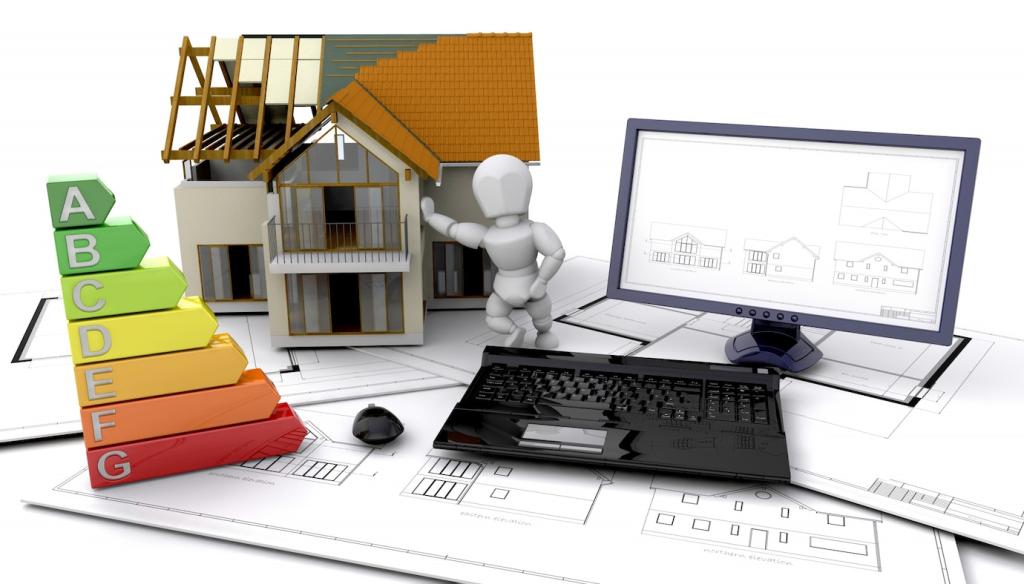
The Future of Green Construction Techniques
Green construction is rapidly evolving as the world faces urgent environmental challenges. Sustainable building practices, innovative materials, and cutting-edge technologies are revolutionizing how buildings are designed, built, and maintained. The future promises a harmonious blend of environmental stewardship, energy efficiency, and social responsibility. This page explores emerging trends, the impact of technology, material innovations, and the role of policy in shaping the trajectory of green construction.
Net zero and carbon positive concepts are defining the next frontier in building sustainability. Whereas traditional green buildings aim to reduce resource consumption, net zero structures are designed to produce as much energy as they consume, usually by integrating renewable energy systems like solar panels and geothermal technologies. Carbon positive buildings go even further, contributing excess clean energy back to the grid and actively reducing atmospheric carbon through techniques like carbon sequestration in building materials. These approaches are increasing in feasibility due to technological advances and regulatory incentives, redefining what it means to build responsibly.
Emerging Trends in Sustainable Building
Technology Driving Green Innovation
01
Building Information Modeling (BIM) has revolutionized construction by providing a digital representation of a building’s physical and functional characteristics. BIM facilitates collaboration among architects, engineers, and builders, allowing them to optimize energy performance, select sustainable materials, and minimize waste before construction even begins. This predictive modeling empowers teams to visualize environmental impacts, lifecycle costs, and system efficiencies in real-time, setting a new standard for sustainable project delivery and making it easier to achieve green certification targets.
02
Future green buildings are integrating intelligent systems that respond dynamically to environmental conditions and occupant behavior. Smart sensors, IoT devices, and automation allow buildings to adjust lighting, HVAC, water usage, and energy consumption in real time. These responsive systems ensure that resources are deployed only when needed and help identify inefficiencies or faults for quick correction. As artificial intelligence becomes more sophisticated, smart buildings will not just react but also predict and optimize operations to yield even greater sustainability benefits.
03
Prefabrication and modular construction methods are transforming the way green buildings are constructed. By assembling building components in controlled factory settings, it’s possible to achieve tighter tolerances, reduce material waste, and improve construction timelines. Modular systems allow for flexible adaptation and easy deconstruction or reuse, fitting perfectly within the philosophy of circular construction. As technologies improve, the quality and variety of sustainable prefabricated solutions continue to expand, making them a staple of forward-thinking green developments.
Innovations in Sustainable Materials
Engineered Timber and Mass Timber Products
Engineered timber, such as cross-laminated timber (CLT) and glue-laminated timber (GLT), is reinvigorating wood as a primary structural material for larger buildings. These products combine sustainability with strength, making them a viable alternative to steel and concrete which have high carbon footprints. Sourced from responsibly managed forests, engineered timber not only sequesters carbon but also allows for faster, cleaner construction. Its popularity is surging in multi-story apartments, office buildings, and civic structures, demonstrating that modern architecture can be both beautiful and environmentally sound.
Advanced Insulation Solutions
The next wave of insulation materials is focused on maximizing energy efficiency while minimizing environmental impact. Aerogels, vacuum-insulated panels, and recycled denim insulation are just a few examples of high-performance alternatives to traditional fiberglass or foam insulation. These products provide superior thermal resistance, reduce heating and cooling loads, and can be manufactured with minimal environmental harm. Improved insulation is critical for reducing building energy demand, making it a pivotal area of research and investment in the green construction sector.
Low-Carbon and Recycled Concrete Alternatives
Conventional concrete is one of the most widely used materials but also one of the most carbon-intensive. Innovations in green construction are targeting this challenge with low-carbon cements, geopolymer concretes, and recycled aggregate mixtures. These materials incorporate industrial byproducts, capture carbon emissions, or use less energy-intensive processes to achieve similar or superior performance compared to traditional concrete. As adoption grows, these alternatives promise to drastically reduce the carbon footprint of global construction, while maintaining durability and versatility.
